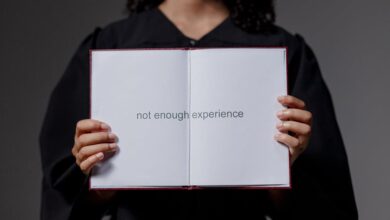The Curated Illusion vs. The Telling Truth

We live in a world where our lives unfold across digital landscapes as much as physical ones. From the carefully curated photo dumps to the impassioned (or perhaps, impulsive) late-night tweets, social media is a sprawling canvas of human existence. But beneath the surface of perfectly filtered smiles and triumphant career updates, there often lurk shadows. Shadows that, if left unchecked, can pose significant risks in our personal lives, our professional decisions, and even the safety of our loved ones. It’s not about being cynical; it’s about being observant. It’s about understanding that the seemingly minor digital missteps, the inconsistent narratives, or the subtle aggressive undertones, are often what we call “social media red flags”—and why it’s absolutely vital to track them.
The Curated Illusion vs. The Telling Truth
Think about it: who among us hasn’t carefully chosen an angle, adjusted a caption, or even deleted a post we later regretted? Social media thrives on presentation. We present our best selves, our aspirational selves, and sometimes, a version of ourselves that isn’t entirely true. This ability to curate an online persona is a double-edged sword. While it allows for creative expression, it also provides a convenient veil for deceit, aggression, or risky behaviors that someone might prefer to keep hidden.
What someone *chooses* to share is telling, yes, but what they *don’t* share, or the subtle inconsistencies in what they do, can be even more revealing. It’s like looking at a meticulously arranged still-life painting – beautiful, but often missing the messy reality of the artist’s studio. These aren’t always grand, dramatic reveals. Sometimes, it’s a pattern of quick anger in comments, a history of frequent job changes hinted at in vague updates, or a sudden, uncharacteristic shift in tone when discussing sensitive topics. These fleeting glimpses, when pieced together, can paint a very different picture of an individual than their polished profile suggests.
Decoding the Digital Footprint
Every like, share, comment, and even every follower interaction leaves a digital footprint. For the discerning eye, these footprints aren’t just random data points; they’re breadcrumbs leading to deeper insights. Aggressive tendencies might manifest as repeated arguments, overly critical remarks, or even subtle cyberbullying across different platforms. Deceit can show up in conflicting narratives about past experiences, sudden changes in online circles, or an almost too-good-to-be-true persona that lacks real-world corroboration. Risky behavior isn’t always overt drug use or illegal activity; it can be reckless decision-making, a disregard for privacy, or a pattern of associating with unsavory groups. These are the red flags that often hide in plain sight, waiting for us to notice them.
Why These Red Flags Demand Our Attention
Identifying social media red flags isn’t an exercise in judgment; it’s a critical component of informed decision-making in various aspects of life. The digital world has blurred the lines between online impressions and real-world consequences, making vigilance more important than ever.
In Dating: Navigating the Minefield of Modern Romance
Meeting someone new online is commonplace now, but it also means wading through a sea of unknowns. A person’s social media can be a powerful vetting tool. Are there signs of “love bombing” early on, where their online persona seems disproportionately intense or flattering? Do their claims align with their online history? Have they demonstrated controlling or possessive behavior towards past partners (even if subtle, through comments or passive-aggressive posts)? Uncovering aggression or inconsistency on social media can save you from emotional turmoil, financial exploitation, or even physical danger down the line. It’s about protecting your heart and your safety before things get serious.
In Hiring: Beyond the Resume and Interview Smile
For businesses, the stakes are equally high. A resume tells you what someone *can* do, and an interview tells you how well they *present* themselves. But a person’s social media can reveal crucial insights into their character, professional conduct, and cultural fit. Are there instances of inappropriate language, controversial opinions that conflict with company values, or a history of online harassment? Social media red flags can signal a potential toxic hire, someone who might undermine team morale, leak sensitive information, or damage your brand’s reputation. It’s not about judging personal lives, but about identifying patterns of behavior that could impact the workplace environment and business integrity.
In Parenting: Safeguarding Our Children’s Digital Journey
Perhaps nowhere are social media red flags more critical than in parenting. Our children navigate complex online worlds, often unsupervised, making them vulnerable. Parents need to be alert to signs of cyberbullying (both as victim and perpetrator), exposure to inappropriate content, or communication with predatory individuals. Red flags might include sudden secrecy around online activities, emotional distress linked to social media, or unexplained new “friends” or gifts. Understanding what to look for on their profiles and those of their online connections can be the difference between early intervention and a crisis. It’s about being proactive in protecting their innocence and well-being in a digital age where danger can hide behind a friendly avatar.
Beyond Human Intuition: The Power of AI in Detection
The sheer volume of data across multiple social platforms makes it nearly impossible for a human to track and connect every potential red flag. Our intuition is valuable, but it’s prone to bias and can easily miss subtle, disparate cues. This is where advanced tools, like Socialprofiler, step in. Imagine an AI that can sift through public activity across platforms – from dormant profiles to active comments, from image metadata to linguistic patterns – to piece together a comprehensive picture. That’s precisely what these technologies aim to do.
AI isn’t about replacing human judgment; it’s about augmenting it. These tools can analyze vast amounts of data, identifying behavioral patterns, linguistic markers indicative of aggression or deceit, and connections that a human might never spot. They can objectively flag inconsistencies, highlight concerning past activities, or pinpoint potential risks that are embedded deep within a person’s digital footprint. It offers a powerful, objective lens, helping individuals and organizations make more informed decisions across dating, hiring, and safeguarding children, by bringing hidden dangers into plain view.
Staying Ahead in a Complex Digital World
In a world where digital interactions increasingly shape our realities, understanding and tracking social media red flags is no longer optional—it’s essential. It’s about moving beyond surface-level impressions to uncover the true nature of individuals we interact with, whether they’re potential partners, employees, or our children’s online acquaintances. It’s about leveraging the insights available to us, including those provided by advanced AI tools, to build safer relationships, foster stronger teams, and create more secure environments for our families.
Remaining vigilant and informed isn’t about living in fear, but about empowering ourselves with knowledge. It’s about making sure that while we embrace the connectivity and opportunities of the digital age, we do so with our eyes wide open, one step ahead of the potential dangers that might otherwise catch us unaware. Your safety, your peace of mind, and your ability to make sound decisions in a complex world depend on it.





